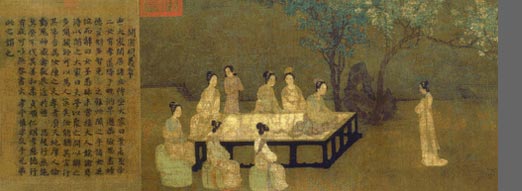| | |
The early history of Chinese furniture recorded in excavated material,
engraved stone and stamped brick reveals a mat-level furniture culture.
The ancient Chinese knelt or sat cross-legged upon woven mats surrounded
by various furnishings including low tables, screens, and armrests.
Examples of excavated lacquer furniture from the ancient kingdom
of Chu (ca. 500 BC) demonstrate an aesthetic of minimalism and simplicity,
and others are decorated with unique colorful patterns and bear
finely carved decoration in relief and openwork. The blending of
artistic form with practical functionality can be seen as a common
thread running throughout the long history of Chinese furniture.

Developments toward high seating were influenced by foreign customs
and the migration of Buddhism. During the second century AD, the
Han emperor Lingdi was recorded to have had a fascination with things
foreign, including the foreign or "barbarian" seat (huchuang).
This term referred to the folding stool, which at that time was
commonly used by nomadic tribes in the more remote northern and
western regions where it was also used for mounting horses. Being
easily carried over the shoulder, it quickly became a popular seat
for traveling or hunting.
Low platforms were another early form of raised seating furniture
which were used as honorific seats by high officials and religious
dignitaries during ceremonial and sacrificial rites. Records from
the Han dynasty (206 BC-220 AD) indicate that these sitting platforms
were called ta; the relatively longer chuang was used both for sitting
and reclining.
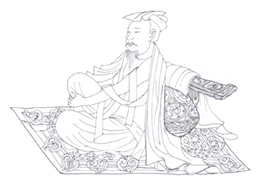
With the eastward migration of Buddhism from India, chairs and raised
platforms began to appear with more frequency as the status enhancing
seats of great masters, along with the custom of disciples gathered
around seated upon stools. Hourglass-shaped stools made of straw
and basketwork also begin to appear during the Northern and Southern
Dynasties (386-586 AD) period; similarly shaped stools of rattan
are still found throughout modern China.
During the transitional period--from mat to chair--kneeling and
cross-legged positions upon the seating platforms was common. Additionally,
the raised platform also began to function as a large, medium-height
table for dining.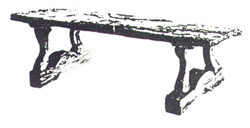
By the Tang dynasty (618-907 AD), stools and chairs had become
common amongst the elite and those of rank. Prototypes to the yoke
back chair as well as the round back chair appear in contemporary
paintings and wall murals which depict the sitter with legs both
pendant and crossed.
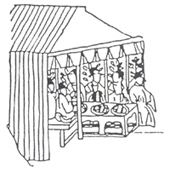
By the Northern and Southern Song (960-1279)
periods, many types of high furniture had developed and were commonly used throughout
all circles of life. Scenes recorded within contemporary paintings as well as
archeological finds reveal that tables, chairs, stools, and benches of the architecturally
related recessed-leg style were widely used.
Waisted cornerleg furniture is also evidenced in Song paintings,
although, this more elegant form, with roots tracing back through
Gandhara to early Greek architecture, appears
to have been reserved for the elite and for activities of ritualistic
and ceremonial significance.
Many basic patterns established during the Song dynasties continued
to mature throughout the Yuan and Ming periods into beautiful well-rounded
and robust forms that were smoothly finished with thick lacquer
coatings and finely detailed with painted decoration. During the
late Ming and early Qing periods, furniture of a minimal classical
style was abundantly produced in durable tropical hardwoods after
a ban on imports was lifted in 1567. The use of these hard, dense
woods spawned advancements in joinery techniques permitting the
creation open, elegant forms previously unattainable in softer woods.
This popularity of this furniture, which often reflected the restrained,
elegant tastes of the scholar official's class, also spread through
the rising nouveau-riche merchant class.
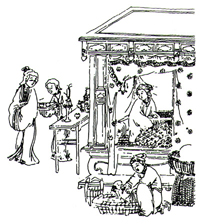
After the fall of the corrupted Ming ruling house in 1644, China
again flourished under the benevolent rule of the early Qing emperors.
While early Qing furniture-makers generally held to classic patterns,
a tendency towards refinement emerges correlating to that which
permeated all of the decorative arts. Qianlong's fascination with
antiquity stimilated archaistic decoration and styles in furniture
design. Qing-style furniture is more angular in form, and the surfaces
are often elaboratedly decorated.
Unseperated from the
culture and history, classical art gives us endless reverie, Chinese
classical furniture, with the mark of the traditional Easstern civilization,
conveys the information of our splendid history and the oriental
concept of steadiness, solemness and glory.
The chinese antique
furniture styles of Ming and Qing dynasties are particularly unique
for their elegance and delicacy. The Ming style antique chinese
furniture has been considerd as the model of Chinese furniture,
with its craftsmanship exquisite, its looks elegantly simple, the
lines simplified and smooth, the mortise and tenon firm and the
construction resonable, Craftsmen of the Qing dynasty inherited
the charm of the Ming style, added a lot into it and created a new
style. Modern society witnesses the growing temptation of truth
and nature.
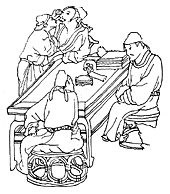
Ming furniture is
characterized by a simple and elegant structure with fluent lines
and appealing proportions. Qing furniture in contrast is larger
and more imposing with elaborate carving and inlaid decoration.
These two types of furniture differed greatly in style but each
reached a high level of artistic success and can claim a place in
the history of world furniture.
Chinese furniture
was highly developed in the Ming Dynasty. Carpentry skills had already
reached a high level in the Song and Yuan dynasties. This combined
with the growing prosperity of city commercial economy, the rise
of house and garden buildings and the import of large quantities
of hardwood from Southeast Asia facilitated its success.
From extant Ming furniture
can be seen that Ming furniture covered all varieties of Chinese
furniture. Its shapes, simple lines, pleasing proportions and a
tight mortise and tenon structure formed a distinct artistic style.
Great emphasis was placed on the use of the natural beauty of the
wood grain together with adopting latticework and openwork carving.
This simple classical style has helped to establish its fame.
The chinese antique furnifure of the Ming and Qing dynasties is of exquisite design, unique workmanship and coreful carving. It has been the rare treasure and one of the most splendid parts of Oriental culture.
|
